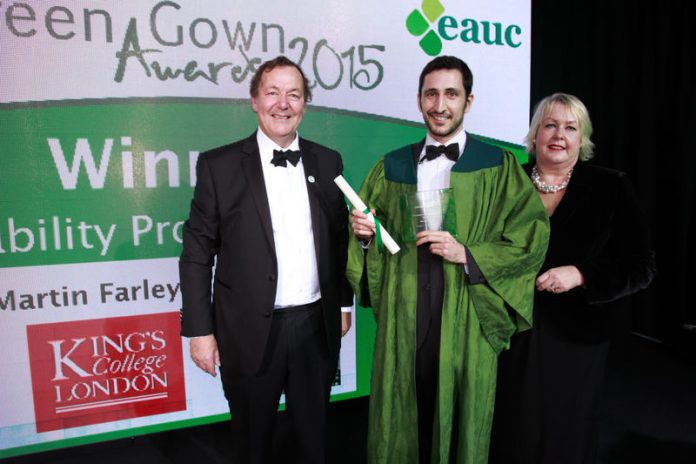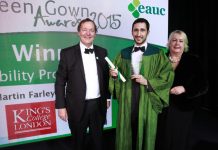Scientific research is vital to medicine and many other fields, but it can have negative effects on the environment. Martin Farley of King’s College London says universities must adopt more efficient practices in research for the benefit of the environment – and their bottom line.
With each passing climate summit and an increased rate of natural disasters, global awareness grows of the consequences of abusing our environment. Such consequences are already being felt in many parts of the world and have injected renewed urgency into environmental movements.
Some important facets of our society, however, have escaped integration with sustainable practices. Scientific research and clinical practice are prime examples. Improving efficiency in science can not only result in energy and significant cost savings, but also reduce waste, improve working conditions, and accelerate research.
As cancer approaches cardiovascular disease as the top killer world-wide, reducing biomedical research or restricting clinical practice is not an option. Biomedical research and related disciplines are paramount to the long term health of our society and many of the practices in these fields have been considered too important or too complicated to be meddled with.
Research contributes to our waste and carbon footprint
However, biomedical research and clinical practice contribute significantly to the world’s waste and carbon footprint. For example, 1.8% of all plastics in 2012 are estimated to have origins in a research facility, much of which is incinerated for safety.
Another acute issue is energy consumption, especially by research intensive higher education institutions. Research facilities can consume between three and ten times more energy than other academic spaces such as lecture theatres. As the UK higher education sector strives to meet ambitious carbon reduction targets, engaging the biomedical research community on the subject of its consumption and waste production becomes essential.
Embedding sustainability into scientific research
Often environmental considerations may be perceived as burdensome when applied belatedly to other practices, but sustainable science does not need to experience this.
It is crucial that sustainable practices are integrated seamlessly into how research is approached. This will not only benefit the environment, but help reduce the associated costs to allow more efficient research which will ultimately benefit society.
Integrating sustainability into science requires a two-pronged approach. It must combine local actions of users with funded initiatives at the estate / facility level to ensure success.
Laboratory standards historically have focused on safety with efficiency and sustainability considerations tangential. A great example of combining local level and facility improvements can be seen in fume cupboards.
Fume ventilation for safety and energy saving
The facility must ensure there is a safe, but efficient amount of air being ventilated, while users must ensure they keep sashes down in their absence. Researchers learn about fume cupboard good practice in terms of their safety or the viability of their studies, but rarely are they taught about the energy saved as well, even though the practice is nearly the same.
Educating researchers on such values could empower local improvements that ensure correct practice with key research equipment as well as reduce excessive energy consumption.
Another example is storage temperatures which tend to be based on convention rather than evidence – see this study on ultra low temperature freezers at the University of Edinburgh for more information. Local users must ensure they maintain their freezers well, while the facilities can house freezers efficiently and provide guidance for best practice and reasoning. Ensuring our standards and regulations are founded not only on safety but pragmatic efficiency could save the sector millions annually.
Our journey has just begun
Today, several organisations and companies are developing ‘green labs’ and tackling the rising costs of research and clinical practice, but we’ve only scratched the surface. In the UK S-Labs has successfully and commendably raised the profile of sustainable science and institutions like King’s College London have led on its implementation. Across the Atlantic My Green Lab and I2SL in the US have done fantastic work in particular on improving equipment efficiency and more.
Green chemistry is gaining traction and several institutions have begun investing sufficiently enough to merit real praise. But our journey has just begun as efforts have focused primarily on reducing energy, and there are no standardised methods for assessing such efficiency between laboratories.
In the future, we need to work together to ensure that every facility is designed to ensure safety, efficiency, reduced impacts on the environment and excellent science. Furthermore, science and medical education need to reflect on all impacts of their fields. Encouragingly, many of these solutions are relatively simple, but will take time to achieve.
In the wake of the recent election in the US and further funding cuts and disregard for climate change, this issue has never been more important.






